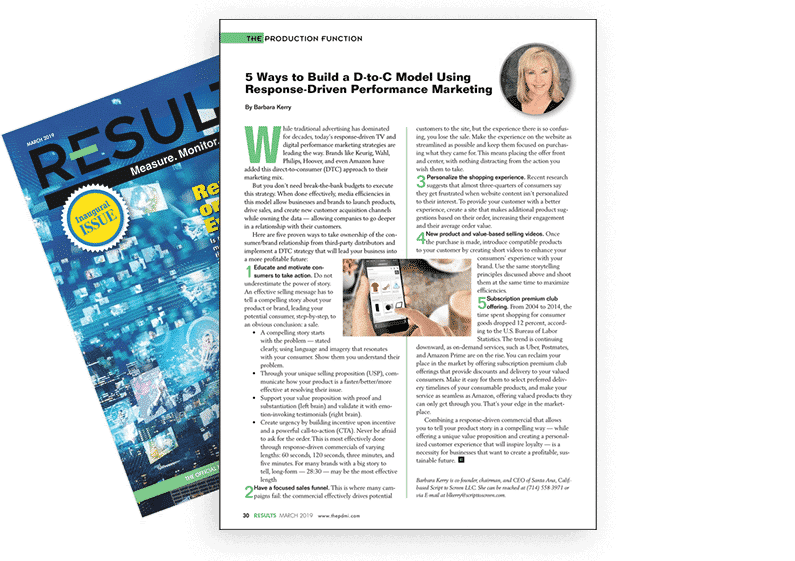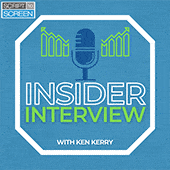5 Ways to Build a D-to-C Model Using Response-Driven Performance Marketing
Here are five proven ways to take ownership of the consumer/brand relationship from third-party distributors and implement a D-to-C strategy that will lead your business into a more profitable future.
Full Article
While traditional advertising has dominated for decades, today’s response-driven TV and digital performance marketing strategies are leading the way. Brands like Keurig, Wahl, Philips, Hoover, and even Amazon have added this direct-to-consumer (DTC) approach to their marketing mix. But you don’t need break-the-bank budgets to execute this strategy. When done effectively, media efficiencies in this model allow businesses and brands to launch products, drive sales, and create new customer acquisition channels while owning the data — allowing companies to go deeper in a relationship with their customers.
Here are five proven ways to take ownership of the consumer/brand relationship from third-party distributors and implement a DTC strategy that will lead your business into a more profitable future:
1 Educate and motivate consumers to take action.
Do not underestimate the power of story. An effective selling message has to tell a compelling story about your product or brand, leading your potential consumer, step-by-step, to an obvious conclusion: a sale.
-
- A compelling story starts with the problem — stated clearly, using language and imagery that resonates with your consumer. Show them you understand their problem.
- Through your unique selling proposition (USP), communicate how your product is a faster/better/more effective at resolving their issue.
- Support your value proposition with proof and substantiation (left brain) and validate it with emotion-invoking testimonials (right brain).
- Create urgency by building incentive upon incentive and a powerful call-to-action (CTA). Never be afraid to ask for the order. This is most effectively done through response-driven commercials of varying lengths: 60 seconds, 120 seconds, three minutes, and five minutes. For many brands with a big story to tell, long-form — [28:30] — may be the most effective length
2 Have a focused sales funnel.
This is where many campaigns fail: the commercial effectively drives potential customers to the site, but the experience there is so confusing, you lose the sale. Make the experience on the website as streamlined as possible and keep them focused on purchasing what they came for. This means placing the offer front and center, with nothing distracting from the action you wish them to take.
3 Personalize the shopping experience.
Recent research suggests that almost three-quarters of consumers say they get frustrated when website content isn’t personalized to their interest. To provide your customer with a better experience, create a site that makes additional product suggestions based on their order, increasing their engagement and their average order value.
4 New product and value-based selling videos.
Once the purchase is made, introduce compatible products to your customer by creating short videos to enhance your consumers’ experience with your brand. Use the same storytelling principles discussed above and shoot them at the same time to maximize efficiencies.
5 Subscription premium club offering.
From 2004 to 2014, the time spent shopping for consumer goods dropped 12 percent, according to the U.S. Bureau of Labor Statistics. The trend is continuing downward, as on-demand services, such as Uber, Postmates, and Amazon Prime are on the rise. You can reclaim your place in the market by offering subscription premium club offerings that provide discounts and delivery to your valued consumers. Make it easy for them to select preferred delivery timelines of your consumable products, and make your service as seamless as Amazon, offering valued products they can only get through you. That’s your edge in the marketplace.
Combining a response-driven commercial that allows you to tell your product story in a compelling way — while offering a unique value proposition and creating a personalized customer experience that will inspire loyalty — is a necessity for businesses that want to create a profitable, sustainable future.


